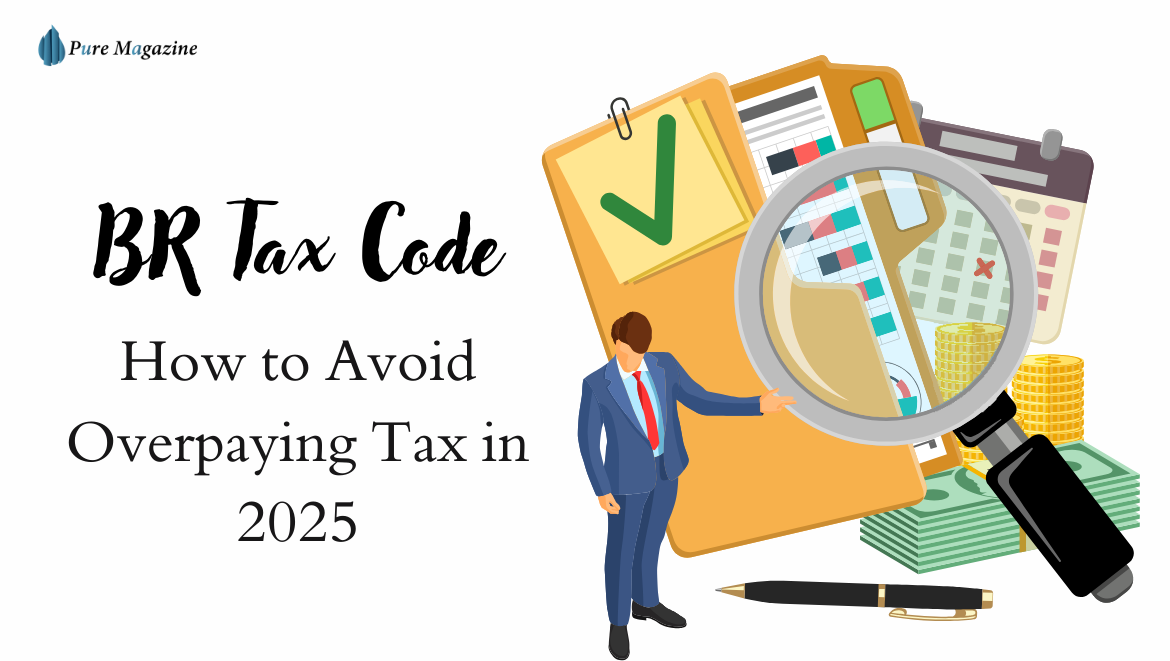You open your payslip and spot two letters: BR. At first glance, it might feel like a secret code meant for accountants—but don’t panic. BR tax code simply means that your income from this source is being taxed at the basic rate of 20%.
The catch? Your personal allowance isn’t applied. That means the first £12,570 of earnings (for 2025/26) isn’t tax-free on this income. In short, you could temporarily pay more tax than necessary—but knowing what BR means puts you back in control.
Why BR Appears on Your Payslip
BR usually shows up in a few common situations:
- Second Job or Pension – If your main job already uses your personal allowance, extra income is taxed at 20%.
- New Job – Employers may not have your previous tax details, so BR acts as a temporary code.
- Emergency Tax Code – HMRC may assign BR while they confirm your allowances.
Think of BR as a temporary safety net—it collects tax correctly while HMRC figures out your exact entitlement.
How BR Affects Your Take-Home Pay
Being on a BR code means all income from that job or pension is taxed at 20%, with no personal allowance applied. This can create a noticeable dip in your take-home pay.
For example: Sarah took a weekend job alongside her full-time role. Her payslip showed BR, and she panicked when her pay dropped. A quick check with HMRC revealed it was temporary. Once her code was updated, she received a refund for the extra tax deducted.
Stories like Sarah’s highlight why understanding BR is essential—it’s not just letters on a payslip, it’s your money at stake.
How BR Differs from Other Tax Codes
It’s easy to confuse BR with other tax codes like NT, D0, or 1257L, but each serves a different purpose:
- 1257L – The standard tax code for most employees. You get your personal allowance, so HMRC doesn’t tax the first £12,570 of your income (2025/26).
- NT – No tax is deducted at all. This is rare and usually applies to certain foreign income.
- D0 – Higher rate tax (40%) applied, often for a second job or pension.
- BR – Basic rate tax (20%) applied without personal allowance. Temporary and often used for a second job, new employment, or emergency coding.
Understanding the difference helps you spot errors quickly and ensures you’re paying the correct amount of tax. If you want to learn more about different tax codes, including 1257L, D0, OT, and others, you can check out this guide to tax codes.
How to Manage a BR Tax Code
If you see BR on your payslip, here’s what to do:
- Check where it applies – Is it for a second job, pension, or emergency tax code?
- Update HMRC – Provide accurate income and allowance details.
- Review payslips regularly – Look for unusual codes every month.
- Use HMRC’s Tax Code Checker – Verify your code quickly online.
When to Contact HMRC
- If you think BR has been applied incorrectly.
- When starting a new job or pension.
- To reclaim overpaid tax from previous months.
The earlier you act, the sooner you can avoid overpaying and make sure HMRC taxes your income correctly.
Quick BR Tax Code Facts
| Scenario | What BR Means | Tax Impact |
|---|---|---|
| Second Job / Pension | Basic rate applied | No personal allowance → pay more tax temporarily |
| New Job | Temporary code | Employer doesn’t yet have your tax details |
| Emergency Tax Code | HMRC confirmation pending | Tax collected safely until allowances confirmed |
FAQs
Q. What does BR tax code mean on my payslip?
BR means HMRC taxes your income from that job or pension at the basic rate of 20%, without applying your personal allowance. It usually appears for a second job, new job, or as an emergency tax code while HMRC confirms your allowances.
Q. Will I overpay tax if I have a BR code?
Yes, temporarily. Since BR ignores your personal allowance, you could pay more tax than necessary. Once HMRC updates your code with the correct allowances, you can claim a refund for any extra tax paid.
Q. How do I fix a BR tax code?
Check where the BR code applies—second job, pension, or emergency. Then, update HMRC with your correct income and allowance details, review your payslips regularly, and use HMRC’s Tax Code Checker to ensure accuracy.
Final Thoughts
The BR tax code might seem confusing at first, but it’s really just HMRC’s way of collecting tax correctly. Understanding BR can prevent overpaying tax and protect your take-home pay.
Always check your payslips, update HMRC with accurate information, and act promptly if you notice a BR code. With the right approach, BR becomes a temporary, manageable step rather than a financial headache.
Visit: Pure Magazine

